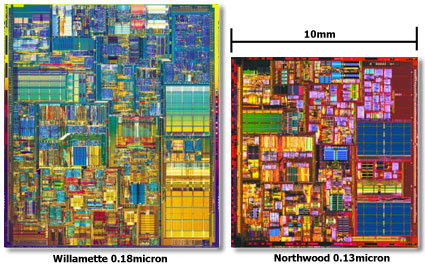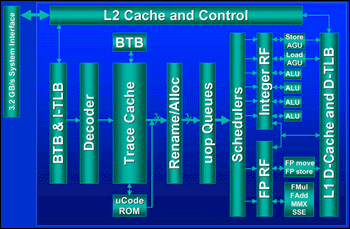
 |

|
| ActiveWin: Reviews | Active Network | New Reviews | Old Reviews | Interviews |Mailing List | Forums |
|
|
|
|
|
DirectX |
|
ActiveMac |
|
Downloads |
|
Forums |
|
Interviews |
|
News |
|
MS Games & Hardware |
|
Reviews |
|
Support Center |
|
Windows 2000 |
|
Windows Me |
|
Windows Server 2003 |
|
Windows Vista |
|
Windows XP |
|
|
|
|
|
|
|
News Centers |
|
Windows/Microsoft |
|
DVD |
|
Apple/Mac |
|
Xbox |
|
News Search |
|
|
|
|
|
|
|
ActiveXBox |
|
Xbox News |
|
Box Shots |
|
Inside The Xbox |
|
Released Titles |
|
Announced Titles |
|
Screenshots/Videos |
|
History Of The Xbox |
|
Links |
|
Forum |
|
FAQ |
|
|
|
|
|
|
|
Windows XP |
|
Introduction |
|
System Requirements |
|
Home Features |
|
Pro Features |
|
Upgrade Checklists |
|
History |
|
FAQ |
|
Links |
|
TopTechTips |
|
|
|
|
|
|
|
FAQ's |
|
Windows Vista |
|
Windows 98/98 SE |
|
Windows 2000 |
|
Windows Me |
|
Windows Server 2002 |
|
Windows "Whistler" XP |
|
Windows CE |
|
Internet Explorer 6 |
|
Internet Explorer 5 |
|
Xbox |
|
Xbox 360 |
|
DirectX |
|
DVD's |
|
|
|
|
|
|
|
TopTechTips |
|
Registry Tips |
|
Windows 95/98 |
|
Windows 2000 |
|
Internet Explorer 5 |
|
Program Tips |
|
Easter Eggs |
|
Hardware |
|
DVD |
|
|
|
|
|
|
|
ActiveDVD |
|
DVD News |
|
DVD Forum |
|
Glossary |
|
Tips |
|
Articles |
|
Reviews |
|
News Archive |
|
Links |
|
Drivers |
|
|
|
|
|
|
|
Latest Reviews |
|
Xbox/Games |
|
Fallout 3 |
|
|
|
Applications |
|
Windows Server 2008 R2 |
|
Windows 7 |
|
|
|
Hardware |
|
iPod Touch 32GB |
|
|
|
|
|
|
|
Latest Interviews |
|
Steve Ballmer |
|
Jim Allchin |
|
|
|
|
|
|
|
Site News/Info |
|
About This Site |
|
Affiliates |
|
Contact Us |
|
Default Home Page |
|
Link To Us |
|
Links |
|
News Archive |
|
Site Search |
|
Awards |
|
|
|
|
|
|
|
Credits |

|
Product: Pentium 4 2.53GHz & Intel D850EMV2
Motherboard |
CPU Architecture
| Table Of Contents |
| 1:
Introduction 2: CPU Architecture 3: SSE2 Instructions & P4 2.53GHz CPU Design 4: Intel i82850e Chipset 5: Intel D850EMV2 Motherboard 6: Intel D850EMV2 Advanced Features 7: Synthetic Benchmarks 8: Games Benchmarks 9: Applications Benchmarks 10: Benchmarks analysis 11: Conclusion |
Note:
If you have already read our previous Pentium
This gets complicated! Built on a P7
core engine, the Pentium


Intel Pentium 4 Willamette &
Northwood Dies
If
using more pipelines present several advantages it has also a major
drawback: to handle the software instructions the processor tries to guess
which one will be the next using tests. With a pipeline enabled CPU the
instructions that follow the test should be managed before the processor
knows the test result in order to continually feed the pipeline. To know
which instructions should be used the CPU uses a ‘branch prediction’
mechanism: most of the time the CPU runs instructions it has already ran
before and probably knows the result ahead of time. It has a
But
in case of a test failure the whole BTB is trashed as well as all the
pipelines in order for the CPU to restart the operation: this process
obviously slows down the whole performance of the computer. The Pentium
For
those of you who don’t know an ALU is the name that was given to the integer
unit that manages math related operations like dividing, adding, multiplying
as well as logical operators like ‘OR’, ‘AND’, ‘XOR’, etc. Just like every
good superscalar processor worth of this name, the Pentium

Intel Pentium 4 Architecture
Schema
With
the
Trace Cache memory can store
As a
reminder Level
A new Bus: Don't Miss It
Over the months, the 400 MHz FSB of the Pentium 4 has somewhat become a bottleneck with the recent CPU frequencies’ increase we have seen. If a 400 MHz FSB was sufficient for a 1.5 GHz P4, it is clearly limited for 2.0GHz and faster CPUs. That’s why Intel engineers have boosted the front side bus of the Pentium 4 to 533 MHz.
The Pentium 4 now comes with a 533 MHz front side bus using a Quad Pumped 64-bit bus where each level operates at 133 MHz for a global 4.2 GB/s bandwidth representing a 33.3% increase of the processor bus bandwidth. Intel used a technical trick so the FSB sends four 64-bit instructions per cycle making it work like a “533 MHz” normal one. Not only does this bus improves performance but it’s also the first one that lets an x86 processor exchanges data so fast between the CPU, the memory and the rest of the system components. To achieve full performance a processor with a 533MHz FSB should be teamed up with new Rambus 1066 memory.
